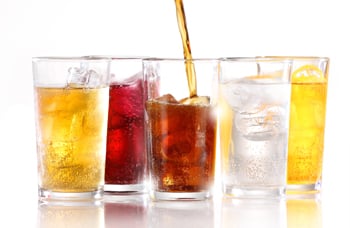Reducing Your Cleaning Time to Produce More Beverages
Today’s beverage market is much more demanding than it once was. The end customers who are consuming beverages are no longer content with a limited number of choices. Instead, they’ve become used to a wide variety of options. If you as a beverage manufacturer are unable to provide those options, these end customers are likely to go to a competitor who can. The problem with this is that you likely aren’t able to dedicate one process line for each different flavour of beverage. It’s simply too expensive to do that, especially if you’re producing a large variety of beverages.
DATE 2023-11-28
This means you’ll have to clean each production line much more frequently than before. Every time you change which beverage you’re producing through that process line, it must be cleaned. This means in order to decrease your overall amount of downtime, you’ve got to increase how quickly you can clean each line. CIP or Clean-in-Place optimization has become one of the most important parts of beverage production because of this.
The Importance of Cleaning - in beverage processing
Cleaning your process line is incredibly important for several different reasons. The first is, obviously, contamination. You need to keep the system as clean as possible to avoid any bacteria or other contaminants from getting into the finished product.
The second reason it’s vital to keep your system as clean as possible is that it prevents the transfer of flavours and aromas from one beverage to the next. This is a quality issue that can lead to a loss of customers if it’s not handled correctly. If there are trace amounts of beverage or ingredient left in the process line when you switch to producing another beverage, it’s possible the flavours of that beverage will be picked up by the new one. This can lead to an entire batch of product tasting wrong. This is especially true if the previous beverage had a very strong flavour to it.
The Benefits of Rapid Cleaning-in-Place ( CIP )
The biggest benefit of optimizing your CIP process is that you will spend less time cleaning your system, which means you can produce more beverage. Your process lines can switch between beverages more quickly, decreasing the amount of time between production. The saying that time is money is certainly true and applies here—the less downtime, the more product and, therefore, profit, you’re making.
But there are other benefits to optimizing your CIP. The first is the amount of water you use. By optimizing your entire process, you’ll not only use less time but less water. Large beverage producers measure their efficiency is by how much water is used in the overall production process of a one liter beverage. A soft drink production with an optimized CIP system should not use more than two liters of water to produce one liter of beverage.
Solutions to these challenges within your beverage process
There are a few different solutions to the challenge of rapid CIP optimization that you may want to consider. The first is the Alfa Laval TJ40G Rotary Jet Head. This tank cleaning machine is specially designed to remove any residue left in the processing tank while also reducing the amount of time it takes to complete a cleaning cycle. The key difference between the Alfa Laval TJ40G and traditional spray heads is that the TJ40G moves much more often. The use of more force cleans the system much more quickly, plus it uses much less water. Overall, the TJ40G can reduce your water use by as much as 70% and your time by as much as 60% when compared to traditional cleaning systems. This system also has its own self-cleaning process, so your overall maintenance time is also reduced.
Another solution to improve your cleaning system is the LKH Prime pump. This is a CIP-return pump that can be used on its own or in combination as a CIP-return and a product pump. This self-priming pump makes use of an advanced design and air-screw technology to improve the CIP system keep the processing line clean. Using one of these pumps enables you to reduce your overall capital expenses by combining your product pump and your CIP pump.
Finally, when compared to a manual swing panel, the valve matrix can help you change product much more quickly while decreasing the various risks associated with line production. These risks mainly have to do with the CIP liquid and cleaning agents that are introduced into the system during this process. If this liquid, which is often caustic or acid, is allowed into the product, it can lead to a major quality issue. Likewise, the cleaning liquid needs to be properly flushed so that it doesn’t enter the atmosphere or present a risk to employees.
A valve matrix equipped with mix-proof values prevents this from happening by enabling the flow of two different fluids through one valve via two independent plugs. This double-seat design allows for spill-free operations, reducing the risk of contamination. There is no manual impact on the process, which reduces contamination and time. The valve itself has a top-loaded design, so it’s easy to clean and maintain as well.
